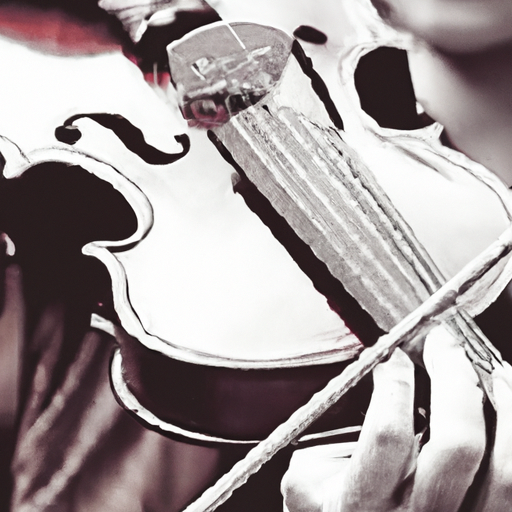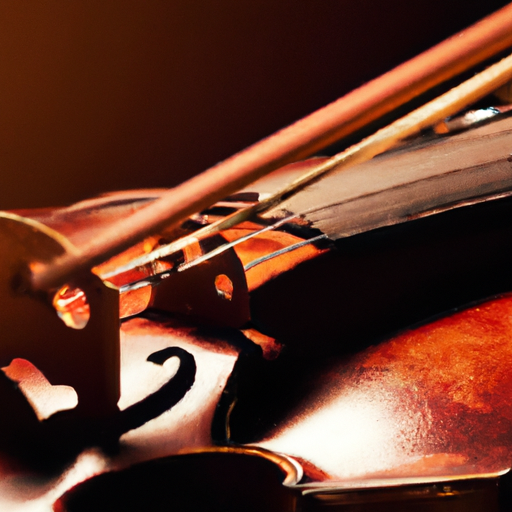
Playing the violin is a beautiful and rewarding experience. It's a versatile instrument that can be played in various genres, from classical to jazz to folk. Whether you've always dreamed of playing the violin or you're looking for a new hobby, it's never too late to start. With dedication, practice, and the right guidance, you can become a skilled violinist in no time.

Before you start your violin journey, it's important to choose the right instrument. Consider the size, quality, and accessories that come with the violin. If you're an adult beginner, you'll need a full-size violin. However, if you're a child or have a smaller physique, you may need a smaller size. It's best to consult with a violin specialist or a teacher to choose the right size for you.

Quality is also an important factor to consider. A well-made violin will produce a better sound and be more enjoyable to play. Look for violins made from solid wood and with a good reputation. While beginner violins may not have the same level of craftsmanship as professional ones, investing in a decent instrument will make a difference in your playing experience.
In addition to the violin, you'll also need essential accessories such as a bow, rosin, and a case to protect your instrument. These accessories are crucial for proper violin playing and maintenance.
Proper posture and holding technique are essential to avoid pain and injuries while playing the violin. Begin by standing or sitting up straight with your feet flat on the ground. Hold the violin with your left hand, making sure to support the weight with your chin and shoulder rest if necessary.
Place your left thumb on the back of the neck, opposite your fingers. Your fingers should be curved and resting on the strings. Keep your wrist straight and parallel to the fingerboard. It's important to find a comfortable and relaxed position that allows you to move your fingers freely.
With your right hand, hold the bow between your thumb and fingers, allowing your wrist to move naturally. Practice bowing exercises to develop control and fluidity in your bowing technique.
Tuning your violin is essential to ensure it sounds great. The standard tuning for a violin is G-D-A-E, from lowest to highest string. You can use a digital tuner or a tuning app to help you achieve the correct pitch. Start by tuning the A string using the tuner as a reference, and then tune the other strings according to the A string.
Be careful when turning the pegs to avoid breaking the strings or damaging the violin. It's recommended to make small adjustments and listen carefully to the pitch as you tune each string. Regular tuning is necessary as the strings can stretch and lose their pitch over time.
Learning music theory is crucial for every violinist. Start by familiarizing yourself with the notes on the staff and their corresponding positions on the fingerboard. Learn how to read sheet music and understand rhythm and timing. Practice playing scales and arpeggios to improve your finger strength and coordination.
It's also important to learn the basic scales, such as the major and minor scales. Scales are the building blocks of music and knowing them will help you navigate the fingerboard and play melodies more easily.
Mastering basic techniques is essential for producing a beautiful sound on the violin. Focus on proper bowing technique, using the right amount of pressure and speed. Experiment with different bow strokes, such as long, smooth strokes and short, crisp strokes.
Work on your fingering technique, ensuring that your fingers are pressing down on the strings with the right amount of pressure and in the correct positions. Practice playing scales, arpeggios, and simple melodies to improve your finger strength and accuracy.
Producing a good sound on the violin is a combination of proper bowing and fingering techniques. Experiment with different bow placements and pressures to find the sweet spot that produces a clear and resonant sound.
Consistent practice is key to mastering the violin. Set aside regular practice sessions and create a practice routine that works for you. It's better to practice for shorter periods of time every day than to have long practice sessions once in a while.
Focus on specific areas of improvement during each practice session. Break down difficult passages into smaller parts and practice them slowly and gradually increase the speed. Use a metronome to help you maintain a steady tempo and improve your sense of rhythm.
Record yourself playing to listen for areas that need improvement. Take note of your posture, intonation, and overall sound. Self-evaluation is an important tool for growth as a musician.
Building a repertoire is an important part of your violin journey. Choose pieces that challenge you but are within your skill level. Start with simple melodies and gradually progress to more complex compositions.
Practice each piece thoroughly, focusing on expression, dynamics, and musicality. As you master each piece, you'll gain more confidence and be able to tackle more challenging repertoire.
Playing with others is a great way to improve your musical skills and have fun. Joining a group or orchestra will allow you to experience playing in an ensemble and develop your ability to listen and blend with others.
Look for local music schools, community orchestras, or chamber music groups in your area. These groups often have different levels of ensembles, so you can find one that matches your skill level. Playing with others will also expose you to different musical styles and genres.
Mastering the violin is a journey that requires dedication, practice, and patience. Embrace the process and enjoy every step along the way. Remember to take care of your instrument, seek guidance from a teacher, and surround yourself with fellow musicians who share your passion. With the right mindset and a lot of practice, you'll be able to master the violin in no time.
Click here to find more resources and information on how to learn the violin.